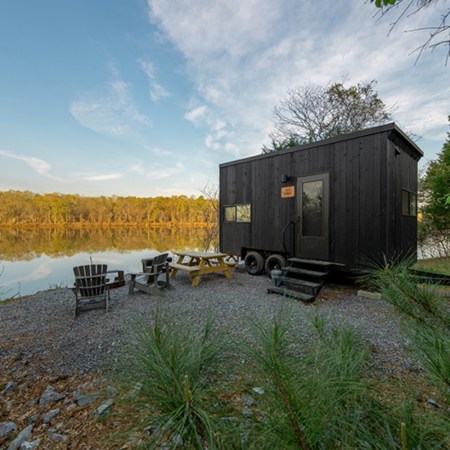The wilderness experience begins long before I actually check into Reni Pani Jungle Lodge, in the central Indian state of Madhya Pradesh, known rather fancifully as the Heart of India. On the drive from the nearest airport in the capital city of Bhopal, I have already spotted a handful of langur monkeys swinging high up from the trees lining the road and a ruddy mongoose that zipped across the road, and had fleeting glimpses of black shouldered kites and white throated woodpeckers.
I know this is just the beginning. With any luck, I will end up with sightings of sloth bear, spotted deer, gaur (Indian bison), a leopard or two, and the big daddy of them big cats, the royal Bengal tiger.
Reni Pani Jungle Lodge is located on the outskirts of Satpura National Park, one of the best forests to see not only tigers in the wild, but also dozens of other mammal, reptilian and avian species. This upscale jungle property spans over 35 acres, with just 12 cottages and four tents built upon them, leaving the rest open and free for guests (both human and animal) to enjoy.

Aly Rashid, wildlife and conservation expert and CEO of the parent company, Jehan Numa Wilderness, is a big believer in being as non-intrusive as possible while dealing with wildlife, which means a “no fencing” policy at Reni Pani. “We wanted to allow the animals freedom to move without any obstruction through the property,” he says. Not surprisingly, Reni Pani attracts regular nightly visitors like leopards and sloth bears to the several ponds and streams scattered within the premises. But don’t be alarmed at the thought — the in-house naturalists and service staff work together to ensure nobody wanders around the property on their own after dark.
In any case, I have no intentions of doing that. Why would I, when I can instead lounge lazily on the massive planters chair at the viewing deck just outside my cottage? There is neither phone signal nor internet connection to distract me here, just the unaccustomed, but strangely soothing noises of the forest — the occasional hoot of a forest owlet, the sudden rustling of dry leaves, the steady hum of cicadas.
A First-Time Visitor’s Guide to India’s Golden Triangle
From New Delhi to Agra and Jaipur
Both the lodge and the village it is situated in get their name from the local reni bushes with the wild berries Satpura’s sloth bears love to snack on. From near the gate where my cab drops me off, it is a long(ish) walk through dry bamboo clumps and over tiny wooden bridges to my cottage. It is discreetly hidden behind towering teak trees and looks deceptively rustic from the outside, for it is built to blend into the habitat rather than scream for attention. But it is more comfortable than I have any right to expect in this kind of wilderness in the middle of nowhere.
Everything about Reni Pani spells safari chic; the furnishings are tastefully accented with earthy brown and orange tones. The gol ghar (literally translated as round house) — a multipurpose reception/dining room/lounge area, built in the shape of a five-pronged star — is the beating heart of this lodge. Meals are a delicious mix of Indian and western dishes, and are served here, except for a packed breakfast when on morning safari, to be eaten in the middle of the jungle. Dinners at the barbecue area just outside are particularly festive and chatty affairs, with the kitchen staff serving up course after course fresh at the table.

What I particularly love is the way the property is dotted with cozy nooks and snug dens in which you can choose to hide behind a coffee table book (with gorgeous photos of the landscape and wildlife, all captured by resident naturalists) or socialize with other guests to compare notes on your luck on the tiger trail.
“We wanted to leave these spaces for people to just sit back and enjoy nature. After all, that’s what they come to a jungle lodge for,” Rashid explains.
But to me, what really makes Reni Pani stand out in the burgeoning number of wildlife lodges in central India is the commitment to give back to the community and the focus on eco-friendly practices. From training and employing men and women from the surrounding villages to using what Rashid describes as “low impact construction material,” like mud and stone from the area, this place believes in treading softly on the land and its inhabitants.

Apart from the usual Jeep safari, Reni Pani also offers night game drives and the unique walking safari option inside the forest. The in-house naturalists who accompany guests on every safari are knowledgeable and passionate about the forests, and keep up a gentle but constant flow of trivia about the trees, birds and smaller animals that often get overlooked in the clamor for the big cats. If you are very lucky, or very persistent, Rashid himself will get into the safari Jeep with you. Or you can sign up for a horseback safari in the reserve forest areas around the property along with Rashid, who is an ardent horseman himself.
If you are heading to India on a wildlife trip, keep in mind that this jungle lodge serves up eco-friendly, barefoot luxury. Plus, there is a good chance you might see some of that wildlife without even stepping out of your cottage.
This article was featured in the InsideHook newsletter. Sign up now.

























